Amadeo Avogadro
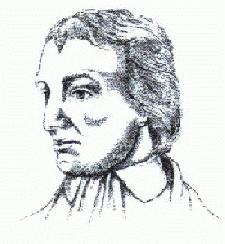
Amadeo Avogadro, conte di Quaregna e Ceretto was born August 9, 1776, in Turin, Italy and died July 9,1856, also in Turin. He was a physicist who first set forth the hypothesis known as Avogadro's Law, which states that equal volumes of gasses or 'vapours' at the same temperature and pressure, contain the same number of molecules. This law explained why gasses chemically combine in simple proportions by volume, and led Avogadro to believe that the elements of hydrogen, nitrogen, and oxygen exist as diatomic molecules in nature. A professor of higher physics at the University of Turin for many years, he stated his hypothesis in 1811, but it was not generally accepted until after 1858, when the Italian chemist Stanislao Cannizzaro constructed a logical system of concepts of modern chemistry. Avogadro's number is the number of molecules in one gram-molecular-weight of any substance. This empirical relation can be derived from the kinetic theory of gases under the assumption of a perfect (ideal) gas. The law is approximately valid for real gases at sufficiently low pressures and high temperatures.
The specific number of molecules is given by Avogadro's constant. In the metre-kilogram-second (mks) system of units, Avogadro's constant is the number of molecules in one kilogram-mole of a substance, defined as the molecular weight in kilograms. The value of Avogadro's constant is 6.023 X 1026 molecules per kilogram-mole in mks units or 6.023 X 1023 molecules per gram-mole in the centimetre-gram-second (cgs) system of units. For example, the molecular weight of oxygen is 32, so that one kilogram-mole of oxygen has a mass of 32 kilograms and contains 6.023 X 1026 molecules.
The volume occupied by one mole of gas is about 22.4 liters at standard temperature and pressure (STP), which are 0°C and 1 atmosphere pressure, and is the same for all gases according to Avogadro's law.
Ludwig Eduard Boltzmann
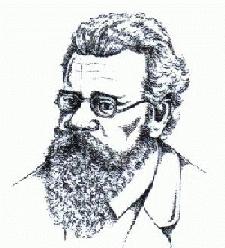
Ludwig Eduard Boltzmann was born February 20, 1844, in Vienna and died on September 5, 1906, in Duino, Italy. He was a physicist whose greatest achievement was in the development of statistical mechanics, which explains and predicts how the properties of atoms such as mass, charge, and structure determine the visible properties of matter such as viscosity, thermal conductivity, and diffusion.
After receiving his doctorate from the University of Vienna in 1866, he held professorships in mathematics and physics at Vienna, Graz, Munich, and Leipzig. He contributed substantially to the foundation and development of statistical mechanics, a branch of theoretical physics. The Boltzmann constant, k, is a fundamental constant of physics occuring in nearly every statistical formulation of both classical and quantum physics. Having dimensions of energy per degree of temperature, the Boltzmann constant has a value of 1.38062 x 10-23 joules per degree Kelvin (o K), or 1.38622 x 10-16 ergs per oK
In the 1870s Boltzmann published a series of papers. He showed that the Second Law of Thermodynamics, which concerns energy exchange, could be explained by applying the laws of mechanics and the theory of probability to the motions of the atoms. In so doing, he made clear that the second law is essentially statistical and that a system approaches a state of thermodynamic equilibrium (equal energy distribution throughout) because equilibrium is overwhelmingly the most probable state in which matter occurs. During these investigations Boltzmann worked out the general law for the distribution of energy among the various parts of a system at a specific temperature.
He also derived the theorem of equipartition of energy known as the Maxwell-Boltzmann law. This law states that the average amount of energy used for each different direction of motion of an atom is the same. He derived the integro-differential equation for the change of the distribution of atoms due to collisions and laid the foundations and much of the structure of statistical mechanics. Boltzmann was also one of the first Europeans to recognize the importance of the electromagnetic theory proposed by James Clerk Maxwell of England. His work on statistical mechanics was strongly attacked by many who did not believe in the atomic theory and wanted to base all of physical science on energy considerations only. There was much misunderstanding of his ideas by those who did not fully grasp the statistical nature of his reasoning. His conclusions were finally supported by the series of discoveries in atomic physics that began shortly before 1900 and by the explanation of fluctuation phenomena, such as Brownian motion which is the random movement of microscopic particles suspended in a fluid. These phenomena in the physical world could be explained only by statistical mechanics. Tragically ill and depressed, Boltzmann took his own life in 1906.
Robert Boyle
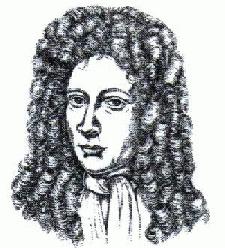
Robert Boyle was born January 25, 1627, in Listmore, County Cavan in Ireland and died December 30, 1691, in London. He was a chemist and a natural philosopher. He was noted for his pioneering experiments on the properties of gasses and espousal of a corpuscular view of matter. It was a forerunner of the modern theory of chemical elements.
Sent to Eton College in 1635, Boyle read Galileo's works during a European tour (1639-44). At Oxford he collaborated with Robert Hooke in constructing an air pump with which he conducted the experiments leading to his publication (1662) of the relationship, now known as Boyle's law, that at constant temperature the volume of a gas is inversely proportional to its pressure.
In The Sceptical Chymist (1661), Boyle attacked the Aristotelian and alchemical views of the composition of matter, proposing that it consists of a single, primary substance that forms clusters, or corpuscles, of varying complexity. Beginning in 1668, he lived in London and continued experimental work on the calcination of metals and the distinction between acids and alkalies. Celebrated during his lifetime, Boyle promoted Christianity abroad and advocated the scientific study of nature as a religious duty. He endowed a series of lectures on the consistency of Christian religion and scientific investigation.
Boyle's law, called Mariotte's Law in Europe, is a relation concerning the compression and expansion of a gas at constant temperature. This empirical relation, formulated by Boyle in 1662, states that the pressure (p) of a gas varies inversely as its volume (v) at constant temperature; in equation form, pv=k, and is a constant. The relationship was also discovered by the French physicist Edme Mariotte in 1676.
The law can be derived from the kinetic theory of gasses assuming a perfect (ideal) gas. Real gasses obey Boyle's law at sufficiently low pressures, although the product pv generally decreases slightly as the gas pressure is raised to appreciably higher values. See also http://www.robertboyle.ie/about-boyle
Jacques-Alexandre Charles
Jacques-Alexandre Charles was born November 12, 1746, in Beaugency, France and died April 7, 1823, in Paris. He was a mathematician, physicist, and inventor. With the Robert brothers, Nicolas and Anne-Jean, he built one of the first hydrogen balloons. Along with Nicolas Robert, he was the first to ascend in a hydrogen balloon in 1783. In the course of several flights, he rose to an altitude of more than a mile.
From clerking in the finance ministry, he turned to science and experimented with electricity. He produced several inventions including a hydrometer and reflecting goniometer, and improved the Gravesande's heliostat and Fahrenheit's aerometer. He was elected in 1795 to the Academie des Sciences, Paris, and subsequently became a professor of physics. His published papers mainly concerned mathematics.
About 1787 he developed Charles' law concerning the expansion of gasses. Charles' law is a statement that the volume occupied by a fixed amount of gas is directly proportional to its absolute temperature, under conditions of constant pressure. This empirical relation was formulated first by Charles about 1787, and later by Joseph Gay-Lussac. It is a special case of the general gas law, which states that the product of the absolute temperature (t) and a constant equals the product of the pressure (p) and the volume (v) or pv=kt, and can be derived from the kinetic theory of gasses under the assumption of a perfect (ideal) gas. Measurements show that, at constant pressure, the thermal expansion of real gasses is nearly the same at sufficiently low pressure and high temperature, showing that Charles's law is approximately valid.
John Dalton

John Dalton was born September 6, 1766, in Eaglesfield, Cumberland, England and died July 27, 1844, in Manchester. A chemist and physicist, he developed the atomic theory of matter and hence is known as one of the fathers of modern physical science.
Dalton, a teacher at the age of 12, spent most of his life in Manchester. He began his studies of meteorology in 1787. He made valuable observations concerning the Aurora Borealis, the trade winds, and the cause of rain. He determined the point of the maximum density of water and published the results of work on color blindness.
In chemistry, his major work began around 1800. Dalton developed the law known as Dalton's Law of partial pressures. Dalton's Law states that the total pressure of gas is equal to the sum of the partial pressures of the individual component gasses. The partial pressure is the pressure that each gas would exert if it, alone, occupied the volume of the mixture at the same temperature. This empirical relation was stated in 1801. It follows from the kinetic theory of gasses under the assumption of a perfect (ideal) gas, and assumes no chemical interaction between the component gasses. It is approximately valid for real gasses at sufficiently low pressures and high temperatures.
He also found that gasses expand as their temperature is raised. Further experiments showed the solubility of gasses in water, the rate of diffusion of gases, and the constancy of composition of the atmosphere. Dalton determined the relative weights of atoms, developed the laws of definite and multiple proportions, and finally formulated the atomic theory which states that all elements are composed of tiny, identical, and indestructible particles. Many of these findings were included in his New System of Chemical Philosophy.
Evangelista Torricelli
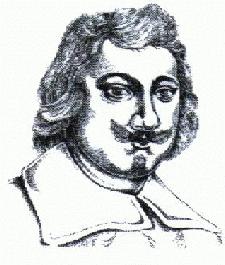
Evangelista Torricelli was born October 15, 1608, in Faenza, Italy and died October 22, 1647 in Florence. He was a physicist and mathematician who invented the barometer. Inspired by Galileo's writing, he wrote a treatise on mechanics, De Motu ("Concerning Movement"), which impressed Galileo. In 1641 Torricelli was invited to Florence, where he served the elderly astronomer as secretary and assistant during the last three months of Galileo's life. Torricelli was then appointed to succeed him as professor of mathematics at the Florentine Academy.
Two years later, pursuing a suggestion by Galileo, he filled a four-foot-long glass tube with mercury and inverted the tube into a dish. He observed that some of the mercury did not flow out and that above the mercury in the tube was a vacuum. Torricelli became the first man to create a sustained vacuum. After much observation, he concluded that the variation of the height of the mercury from day to day was caused by changes in the atmospheric pressure. He never published his findings, however, because he was too deeply involved in the study of pure mathematics. He pursued calculations of the cycloid, which is a geometric curve described by a point on the rim of a turning wheel. In his Opera Geometrica ("Geometric Work"), published in 1644, Torricelli included his findings on fluid motion and projectile motion. His developments in geometry aided in the eventual development of integral calculus
Joseph Fourier
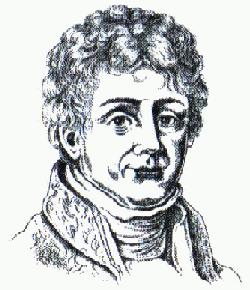
Joseph Fourier was born March 21, 1768, in Auxerre, France and died on May 16, 1830. A brilliant mathematician, he developed the partial differential equations governing the steady-state and time-dependant propagations of heat in solid bodies. He solved these equations with an infinite series of trigonometric equations, now known as a Fourier Series. His analytical methods for solving heat transfer problems departed from others of the time by distinguishing between interior and surface conditions, treating each separately. He was awarded the Grand Prize in Mathematics from the Institut de France in 1810 for his work.
Gustave de Coriolis
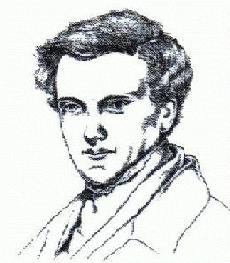
Gustave de Coriolis was born May 21, 1792 in Paris, France and died September 19, 1843. He is best remembered for his discovery of the Coriolis force relating to centrifugal motion. In a rotating frame of reference, he found a force that was perpendicular both to the flow direction and to the axis of rotation. He revealed how the laws of motion could be used in this rotating frame of reference if an extra force, called the Coriolis acceleration, was added to the equations of motion. Coriolis also developed relationships for the work and kinetic energy involved in the movements of solid bodies.
Hendrik A. Lorentz
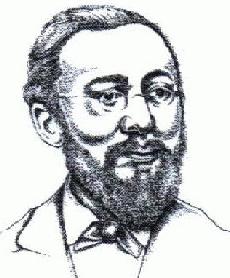
Hendrik A. Lorentz was born July 18, 1853 in Arnheim, Netherlands and died February 4, 1928. He refined Maxwell's electromagnetic theory in his doctoral thesis and was appointed professor of mathematical physics at Leiden University in 1878. He is best known for the Fitzgerald-Lorentz Contraction, a hypothesis that played a role in discrediting the notion that the vacuum of space is filled with a material medium called ether. Lorentz also proposed that light waves were due to oscillations of an electric charge in the atom. His mathematical theory of the electron brought him a Nobel Prize in 1902. More information .
Blaise Pascal

Blaise Pascal was born June 19, 1623 in Clermont-Ferrand, France and died August 19, 1662. He invented the first digital calculator which roughly resembled the mechanical calculators of the 1940s. His studies in geometry, hydrodynamics, hydrostatic pressure and atmospheric pressure led him to invent the syringe and the hydraulic press. His studies also led to the discovery of Pascal's Law of Pressure, wherein external forces to a confined fluid are transmitted uniformly in all directions. Pascal's vacuum-in-a-vacuum experiment and his theory of pressure equilibria resulted in the determination that the pressure exerted by a vacuum is zero. More information is available in an excerpt from 'A Short Account of the History of Mathematics' (4th edition, 1908) by W. W. Rouse Ball.
Quotations:
"We are usually convinced more easily by reasons we have found ourselves than by those which have occurred to others." Pensees, 1670.
"It is the heart which perceives God and not the reason." Pensees, 1670.
"Man is equally incapable of seeing the nothingness from which he emerges and the infinity in which he is engulfed." Pensees, 1670.
Christaan Huygens
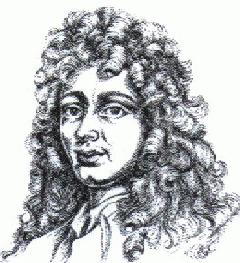
Christaan Huygens was born April 14, 1629 at The Hague, Netherlands and died July 8, 1695. His father "discovered Rembrandt". He was a technical physicist and a contemporary of Isaac Newton. He patented the first pendulum clock and derived the law of centrifugal force for uniform circular motion. An accomplished vacuum research specialist, he constructed some of the first practical vacuum pumps. His theory of light propagation through air and vacuum departed from conventional wisdom, which held that a vacuum had material properties. His view was that a vacuum was without physical properties and is, of course, the foundation of all vacuum technology today.
Joseph-Louis Gay-Lussac
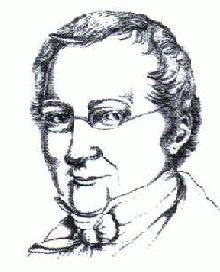
Joseph-Louis Gay-Lussac was born December 6, 1778 in Limoges, France and died May 9, 1850. A brilliant experimentalist, he is known for developing the Law of Combining Volumes (more information) and his hypotheses on the interactions of gasses. He also developed the lead chamber process for the production of sulphuric acid. The tall absorption towers are referred to as Gay-Lussac Towers even today. His work on iodine research is considered by many to be a model of chemical research. While Gay-Lussac was the first to isolate the element boron, he lost out on its discovery to Humphry Davy, who isolated it nine days later but was the first to publish the results.
Otto von Guericke
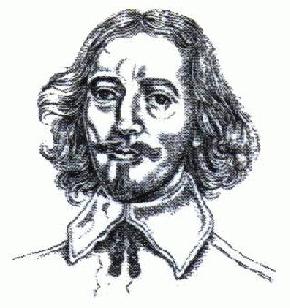
Otto von Guericke was born November 20, 1602 in Magdeburg, Germany and died May 11, 1686. A physicist, engineer, and natural philosopher, von Guericke invented the first air pump and used it to study vacuums and the role of air in combustion and respiration. His first pumps were inverted pumps (for fire fighting) that could evacuate larger volumes of air than could be done using static methods. His pumps were used to demonstrate the well-known Magdeburg experiment where two teams of eight horses were unable to pull apart two evacuated brass hemispheres. His latter pump designs used lever pumping systems. In 1663, von Guericke also built the first machine to create an electric spark.
 The above data were compiled from a number of sources including some 85 year old encyclopedias. If you found this data interesting or useful, please let us know. If you have a useful tract or note, send it to us for posting.
The above data were compiled from a number of sources including some 85 year old encyclopedias. If you found this data interesting or useful, please let us know. If you have a useful tract or note, send it to us for posting.